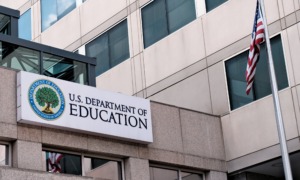 The so-called Family First Prevention Services Act has been hailed as a radical change in how child welfare is paid for by the federal government. It’s not. The changes will barely make a dent in a system that lavishes billions of federal dollars on foster care, and far less on efforts to keep children safely in their own homes.
The so-called Family First Prevention Services Act has been hailed as a radical change in how child welfare is paid for by the federal government. It’s not. The changes will barely make a dent in a system that lavishes billions of federal dollars on foster care, and far less on efforts to keep children safely in their own homes.
But the Trump administration’s proposed budget, a document that is, in most ways, as dreadful as one might expect, appears to revive a much more far-reaching, and much better, approach to changing the way the federal government reimburses states and localities for child welfare.
The Congressional Budget Office estimates that Family First will add only $130 million per year to funding for prevention, an increase equal to less than 3 percent of what the federal government lavishes on foster care. In contrast, the federal budget proposal has the potential to free up billions of dollars for family support and family preservation. The proposal also would allow those dollars to be spent on a wider, smarter range of services than is permitted under Family First. That could save thousands of children from the rotten outcomes and risk of abuse in foster care.
The proposal has its roots in a plan first developed 15 years ago.
Back in 2003, then-Rep. Wally Herger, R-California, proposed taking funds that then — and now — could be used only for foster care and allow any or all of that money to be used on better alternatives. The catch: No more open-ended entitlement, in which the federal government reimburses part of the cost of “care” for every eligible foster child no matter how many children a state takes away.
The administration of President George W. Bush proposed a similar program, but under that plan the change in funding would be voluntary. States could take the deal or stick with the status quo.
Then, as now, this open-ended entitlement, known as Title IV-E, meant the federal government spent vastly more on foster care than on safe, proven alternatives, which are funded under a much smaller flat grant program, Title IV-B.
This creates an obvious, perverse incentive.
No, it does not mean states “make money on foster care.” The federal government picks up a lot of the cost of foster care, but not all of it. But it does mean that in some circumstances foster care may cost state and local governments less than better options. Foster care costs more than better alternatives in total dollars, but states or localities often pay only a fraction of the cost of foster care. In addition, many private agencies that run group homes and institutions and sometimes oversee family foster homes are paid for every day they hold a child in foster care — they really do make money on foster care.
Had either plan passed, and had all states opted in, the states would have gotten $5 billion more over the first five years than they actually received under the status quo, according to an estimate from the Congressional Research Service, first disclosed by my National Coalition for Child Protection Reform in this column in 2010.
Though the discussion of the plan contained in the proposed federal budget is brief (see page 104 of this document), it appears to be the same as the one proposed by the Bush administration. As with that plan, this one would be voluntary for the states.
Unfortunately, history suggests the chances for passage are slim.
Back in 2003, in a joint op-ed for USA Today, then-House Majority Leader Tom DeLay, R-Texas, and then-Sen. Hillary Clinton, D-New York, said the idea “deserves careful consideration.”
That never happened.
Even the version in which participation was voluntary was met with a campaign of fear and smear by the child welfare establishment — in particular the Children’s Defense Fund and the Child Welfare League of America, a trade association for agencies, including private agencies that need a steady supply of foster children to stay in business. So I’ll ask now what I asked then: What part of “voluntary” don’t my fellow liberals understand?
The fact that their fear campaign cost states $5 billion won’t stop the child welfare establishment from doing it all again. This time it’s different, they’ll say. Last time foster care numbers were declining, now they’re increasing so states are bound to lose money.
But foster care numbers are rising precisely because there are no incentives of any kind to curb needless foster care. Personal, political and financial incentives all push child welfare systems toward its misuse and overuse. For example, foster care is not increasing because of the opioid epidemic. Foster care is increasing because of child welfare’s typical, knee-jerk failed response to the opioid epidemic.
Change the financial incentives and it will make far more funding available for all the services needed to curb unnecessary foster care, not just the limited number of services favored by the Family First Act, most of which do more to help the helpers than to help families. And changing the financial incentives will help stiffen the backbone of child welfare and political leaders to resist all the other pressures to adopt a take-the-child-and-run approach to child welfare.
Richard Wexler is executive director of the National Coalition for Child Protection Reform.






























